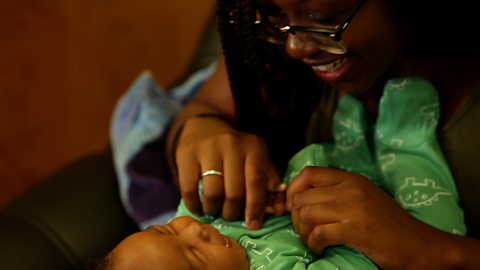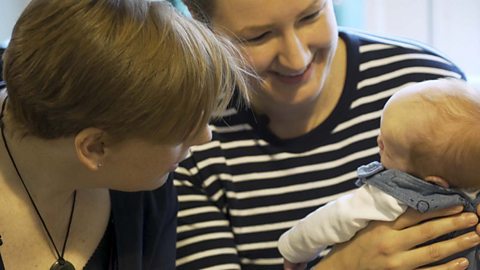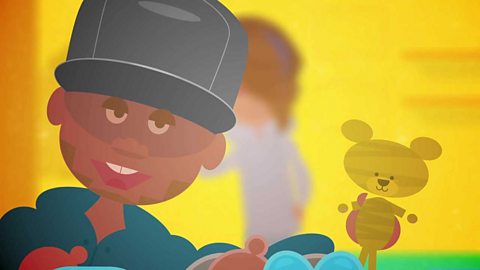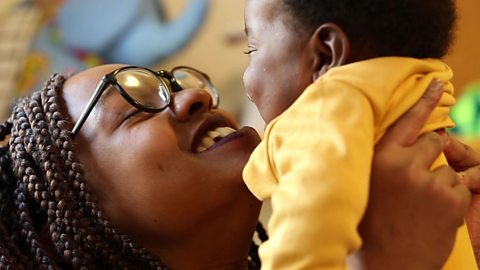Face-to-face chat and play is a great way for babies to start to learn from birth.
From day one, they respond to eye contact and can recognise the voices they most often hear. By seeing facial expressions and watching how mouths move as they make sounds, they begin to learn about language.
So one of the best things you can do from the very start is to get up close and let them watch your face as you talk.
Do you know babies learn so much from your face?
They're watching your mouth, hearing your voice and these are all early tools for talking.
Babies are born short-sighted and focus on what's really close to them like your face!
They respond to eye contact right from birth. So it's good to be at their level when you're face to face.
Babies tune into the tone of your voice much more than the words at this age ,so make your voice fun and use a sing-song voice.A
Remember, babies learn so much from face-to-face contact, so keep doing it!

When do babies make eye contact?
Babies typically start to make eye contact from around 6 weeks of age, though all babies develop at different rates.
How far can babies see?
Babies can only focus on things a short distance away at newborn stage - typically only about 20-30 centimetres. For this reason, it's important that adults get up close and face to face when talking to babies, so they can see your face and follow your expressions.
The benefits of getting face to face with baby
If you get up close to your baby as you're talking to them, they can watch the movements you make with your face as you speak and they listen to the sounds that you are making. This is the first step toward them learning about making speech sounds for themselves.
If you couple being face to face with sing-song baby talk, they'll find it easier to pick out the sounds that you're making in words and how you're making them.
Face to face time with baby
There are lots of great opportunities for you to get down to babies' level. You could try chatting to baby through nappy changes, getting up close during tummy time, singing to baby during a feed or talking through bath time.







